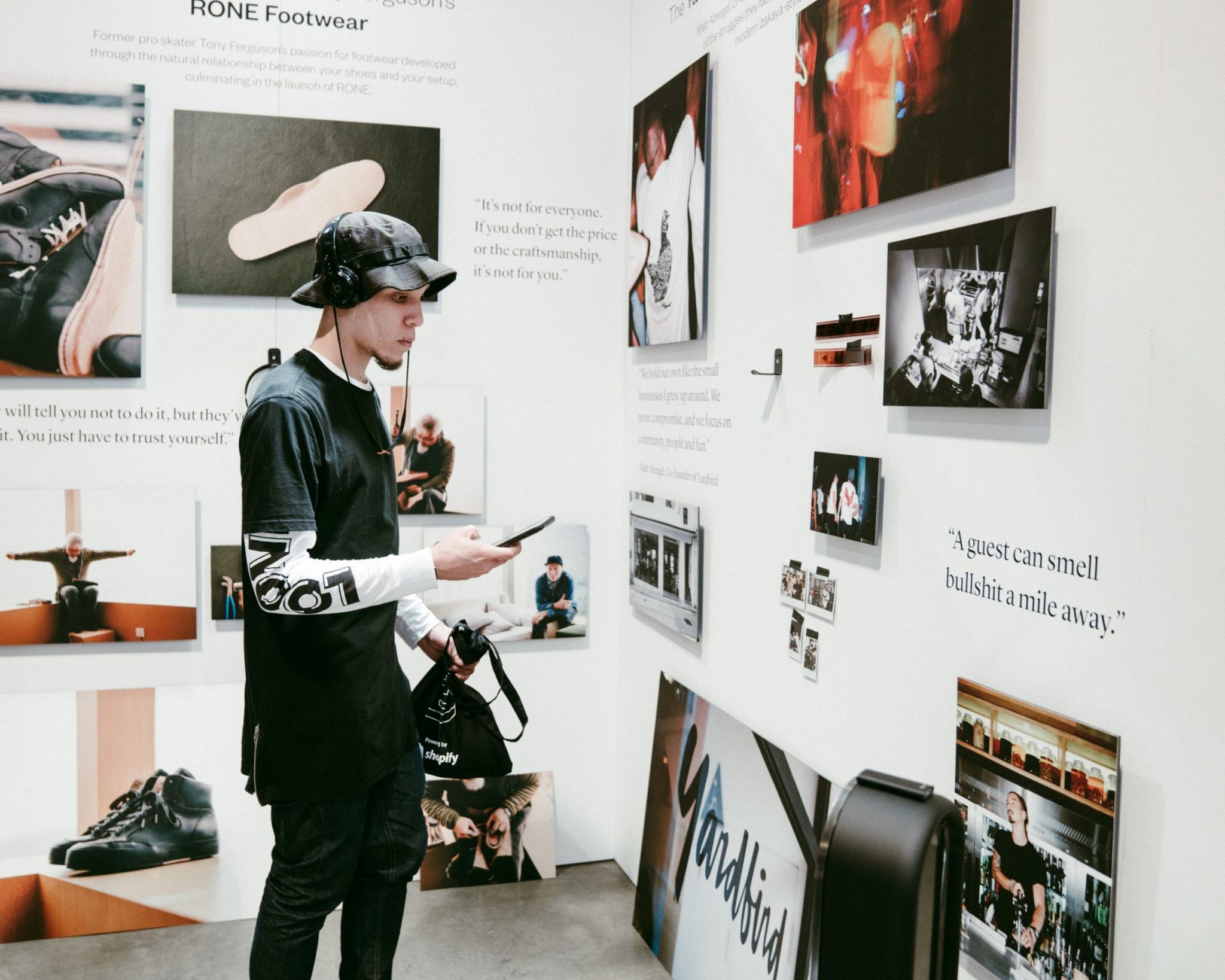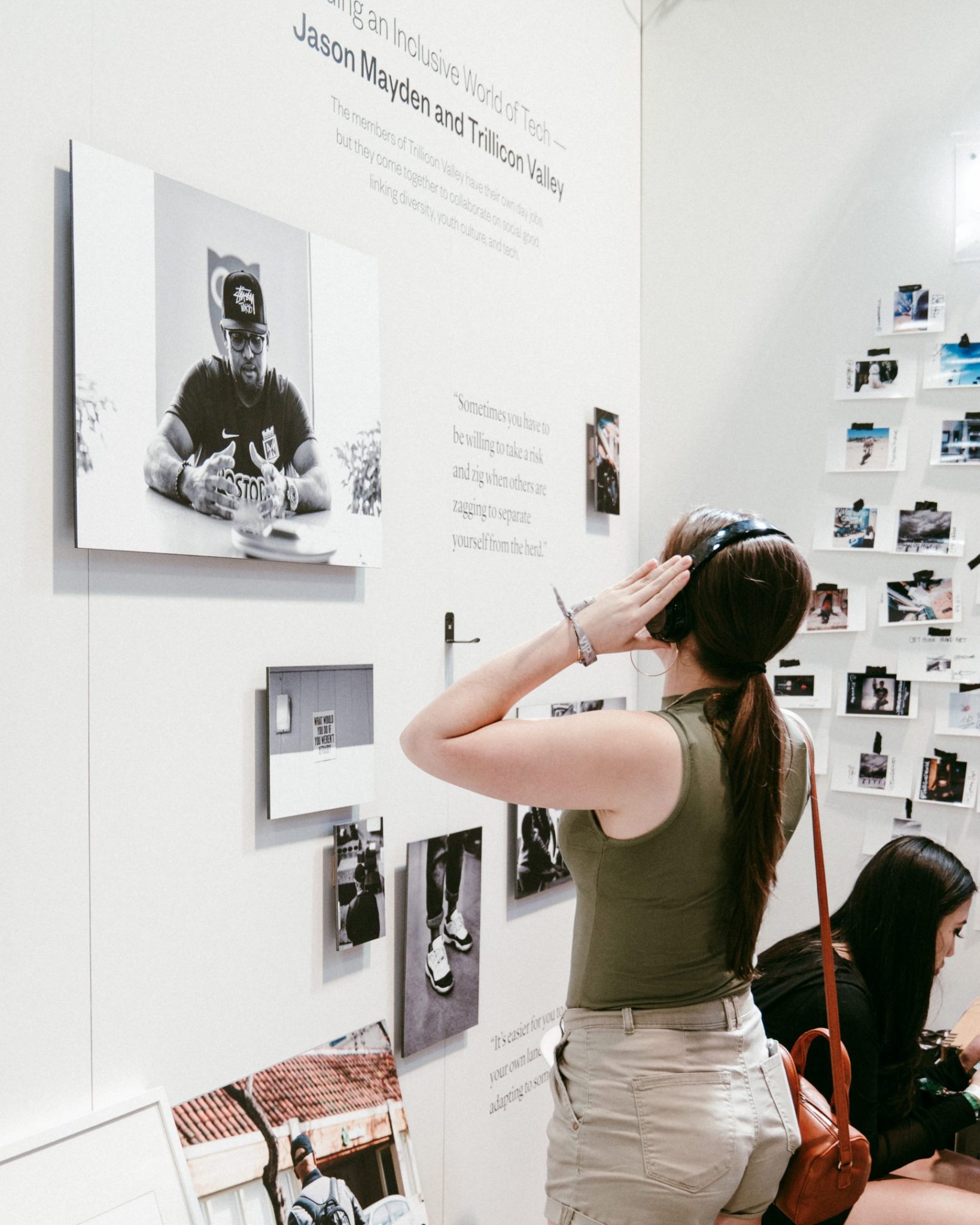In response to a faltering traditional tradeshow model, the inaugural ComplexCon represented a chance for vendors, industry leaders and fans to gather and connect. It was also the starting point for an online publication you might be familiar with. MAEKAN discusses the ComplexCon experience, some of the initial misgivings and challenges experienced over the two-day event. It all leads to a profound realization that he and the rest of the team walked away with.

MAEKAN x Sygns Berlin neon sign for our ComplexCon studio
From Shanghai to Syracuse, Osaka to Omaha, the Internet has allowed people from all over to connect with the world of street culture. Now, despite what the name might suggest, the “street” in street culture has changed since its early days.
It means more than what’s happening on city streets and the definition is always up for interpretation.
But most would agree that as an industry — as opposed to a culture — it’s essentially rooted in the youth with a heavy leaning towards fashion and music.
Purists from traditional cities might scoff at what others deem to be street culture, but the reality is that it’s fluid and generational: You just can’t tell the youth of any given city what they can and cannot appropriate.
The flatness of the Internet introduces a dynamic that has never been seen before, so it’s fitting that the inaugural street culture-inspired consumer tradeshow ComplexCon was said to be “walking through the Internet.” It brought many elements often seen and discussed predominately online into an offline format.
In a previous story, we talked about how important it was to participate there. We also discussed our apprehension in taking part. So, what were our thoughts after the fact?
The reality greatly exceeded our expectations.
Nobody could predict what kind of crowd would show up. In fact, that was the inherent beauty of ComplexCon. You didn’t need to know who 21 Savage was. You didn’t need to know about that up and coming rapper with a few thousand plays on Soundcloud. You simply needed to be interested in pop and consumer culture.
“Our goal for the experience wasn’t to attract as many people as possible. Instead, it was having a sense of intrigue and hopefully enough mystery for somebody to pop their head in.”


Views of our Community Mood Board wall at ComplexCon.
It was a sight to behold filled with toys, sports, fashion, fast cars, and more. Every inch of ComplexCon was a moment that was potentially shareable on social media, and as such, the frantic nature of a commercial trade show worried us in our pre-planning stages.
We weren’t sure if we as a publication aligned with the experience, yet we created something that was true to us, regardless of what the rest of the landscape entailed.
Our goal for designing the MAEKAN experience at ComplexCon wasn’t to attract as many people as possible. Instead, it was creating a sense of intrigue and hopefully enough mystery for somebody to pop their head in.
The aesthetics of the plexiglass walls were much different than anything else at ComplexCon and provided us with just the right amount of traffic control. The interior was meant to be a mix of both MAEKAN the website, in a tangible format, as well as a translation of MAEKAN’s office vibes.


The initial challenge was taking our stories offline, which took a bit of thought. With everybody not being able to view the site, how could we ensure physical visitors get a good feel for MAEKAN? We elected to present three stories just as they’d appear in their digital form. Beats were gracious enough to sponsor us with a bunch of their latest Solo3 Wireless Headphones, and this allowed people to listen to the select stories while walking around the booth.
With half the booth dedicated to the so-called “offline” element of our site, the rest were conceived as an extension of our office. Furniture provided by Modernica gave people a comfy place to rest such that some would even listen to stories from start to finish only to pick up another headset and listen to the next.
The last part of it was our Community photo project, which encouraged people to share with us a favorite moment that we then printed and put up on the wall with a personalized message. We rewarded their contribution with an art print from one of the three stories we had on display.
We did this in part to challenge the idea of “free swag” at trade shows. Typically, these transactions are frictionless. The fluidity of the experience becomes a bad thing such that you don’t truly value what you’ve received because it essentially took no effort to earn it. Of course, we wanted people to value the prints we were offering.
The event wasn’t without difficulty. There were the usual technical hiccups, including photos that wouldn’t print or were printed in the wrong sizes. But people were surprisingly patient with the process and very receptive to the idea, so by the end of the show, when we had filled up an entire wall of unique memories and experiences.

A close-up of our Community photo project at ComplexCon. We asked people to put up photos most relevant to them. In return, they received an editioned print from one of our stories.
As an organically-assembled collage of fun photos from real people, the wall gave us — as an unlaunched publication at the time — presence that we needed to build.
Up until then, we were essentially unknown, so we knew the two-day event would be as much about assessing and evolving as it was interacting. There was no point of reference for MAEKAN, so explaining it was a challenge.
But even to those wholly unfamiliar, calling it a “visual podcast” seemed to resonate with many and the idea of paying for a membership for a publication wasn’t met with stone-faced stares as we’d originally imagined.
Cohesive messaging is a quality we’ve always pushed, so our very first and last pitches of the show were drastically different as we got a feel for how to communicate our vision. A subtle nod or a more animated smile went a long way in making you more confident with each interaction.
Still, the process was largely a crash course for the team, Alex and I included. There were a lot of details to iron out, but we knew right away to invest in the idea that “seeing is believing.” For this reason, and especially for pre-launch, you couldn’t simply rely on pulling up MAEKAN on a bunch of smartphone or tablet screens.
You had to paint a more vivid picture by choosing existing and understood mediums and combining them together. Simple enough conceptually, though technology and people might not always be willing to play along in real-time.
The first day of the show, we had originally set-up a TV to showcase our short documentary on Grills. However, the snail-paced Internet at the venue prevented anything from being streamed over our Chromecast.
There was also a massive line-up in front of our booth for the UNDFTD and Anti Social Social Club collabo, and it blocked the entrances to our booth which meant people had to go out of their way to check it out.
In hindsight, it wasn’t necessarily to our detriment. Sure, we might have missed out on some organic foot traffic, but people did manage to find a way in and satisfying a curiosity by slipping out of a predetermined path are all things inherent to present and future MAEKAN members.
In that respect, ComplexCon also brought to light something that was certainly known, and further validated: street culture as we know it began as the exchange of ideas. Your contributions originally translated into respect and cultural currency, but it has changed drastically. It’s now the ability to simply wear the right brands and associate yourself with the right things that have granted one entrance into the culture.
Still, the culture hasn’t been completely consumed by its own inalienable commercial interests. It’s an industry built on a do-it-yourself attitude and people who subscribe to that are still thriving. There are many small independent labels that were on the floor at ComplexCon doing their own thing and doing it well.


But going forward, we must continue to question membership in a community that doesn’t include some real effort and involvement. Yes, the lineups we saw can be perceived as a success if not simply interesting, but a deeper look at it all points towards an unsettling trend.
A culture focused on materialism without any friction to overcome doesn’t result in a solid foundation: it rarely promotes independent thinking as the decisions are predicated on the perception of peers and community, not on individual investment.
And with each revelation comes tough questions, some that we as a publication must answer for ourselves down the line and certainly before the next ComplexCon-scale event.
As a culture—regardless if it’s to do with streetwear or creativity—you must ask, “are we putting forth our best foot?”
Are we ensuring we’re creating something that improves the community we’re all so passionate about or are we simply maximizing our ability to generate revenue in exchange for a borrowed identity of the moment?
Will this temporary cool carry any meaning once the trends have ended?



























